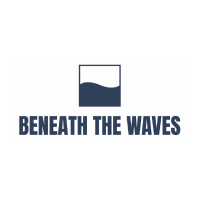Shark, Turtle, and Seagrass Research x Call to Earth CNN Documentary Filming with Beneath The Waves
DISCOVERY Yacht Mystique
Exumas, Bahamas
March 1 - 7, 2024
Leadership
Research Team
- Austin Gallagher
- Olivia Dixon
- Tadzio Bervoets
- Shannon Aldridge
- Armando Santos
Project Overview
The International SeaKeepers Society joined Beneath the Waves research team on this project that was in recognition of CNN's partnership with Rolex to report on individuals and organizations that are working to find solutions to Earth’s climate challenges, "Call to Earth". The program included 30-minute segments on CNN International, social media videos, digital articles, and a Call to Earth Day (24-hour initiative). They are looking to feature positive, real, and impactful solutions – which is where Beneath The Waves come in. BTW will provided an action-packed week showcasing conservation science in action, highlighting the importance of connectivity throughout the ocean, and inspiring viewers to do their part as well.
Duration of Project
This was a five-day expedition that took place during March 1st to the 7th in 2024.
Expedition Summary
During March 1st - 7th, 2024, The International SeaKeepers Society has once again partnered with the research NGO, Beneath The Waves for a week of research, as well as CNN International, which was on board to document the expedition for a documentary series called Call To Earth. This episode will feature Dr. Austin Gallagher and other Beneath The Waves team members conducting research on Sharks, Sea Turtles, and Blue Carbon. Over the course of 5 days, the core team lived aboard the 87' DISCOVERY Yacht Mystique, one of the many Fleet Miami vessels that has helped SeaKeepers over the years. The accommodating, yet nimble Warren motor yacht was able to not only provide lodging and meals for the team, but also allowed them to swiftly move from Nassau, Bahamas, to Highbourne Cay, Bahamas and back. It was even useful as a platform to tag sharks from. D/Y Mystique also carried a small inflatable RHIB jet boat in its rear garage, which turned out to be the perfect platform from which to seek out and catch Sea Turtles. As usual Shark tagging consisted of the usual work up routine, including taking measurements, blood and tissue samples (for assessing the health and feeding habits of the animals), and fitting the them with a tag which allows the shark to be easily identified when tracking it's movements. For sea turtle tagging, Armando Santos was recruited as a turtle expert for this expedition. He brought four satellite tags, and all four tags were fitted to four different green turtles. Lastly, sediment cores were taken from seagrass beds. These cores are basically two-foot long cylinders of seagrass, their root systems, and the sediment from which they grow, which are dug up using a special coring device. Seagrass and its roots have proven to sequester and store carbon from the atmosphere and ocean.
Application
As with most research that deals with large marine animals such as sharks and turtles, new discoveries are made that lead to further questions and discoveries. Tracking the movements of tiger sharks helped scientists discover one of the largest seagrass meadows in the world. As previous research showed that tiger sharks prey on sea turtles, who in turn feed on seagrass, it seems a logical next step to track the movements of these turtles. learning more about these ecosystems and their inhabitants is the only way to truly know how important they are to the overall health of the ocean. Further research of the benefits of seagrass, as well as other marine vegetation will allow us to better protect these areas, which will be crucial in our fight against climate change.
Location
Northern Exumas, Bahamas




You must be logged in to post a comment.